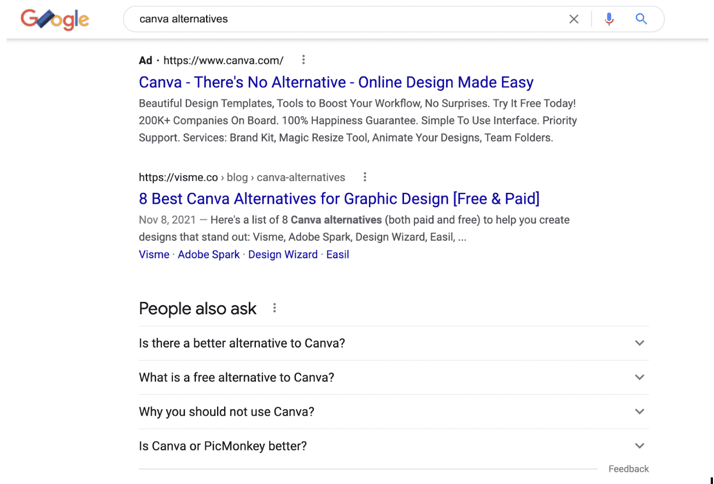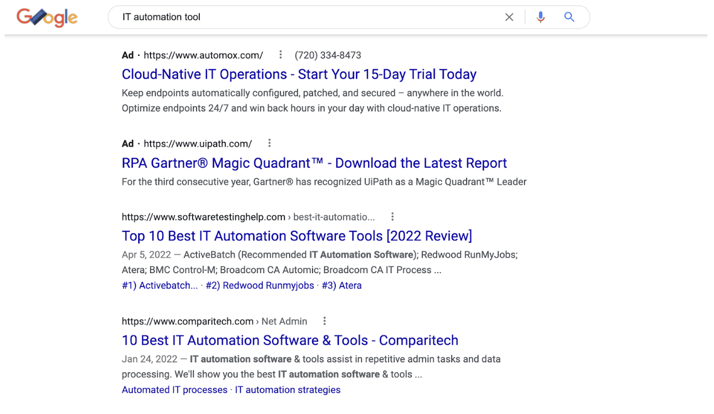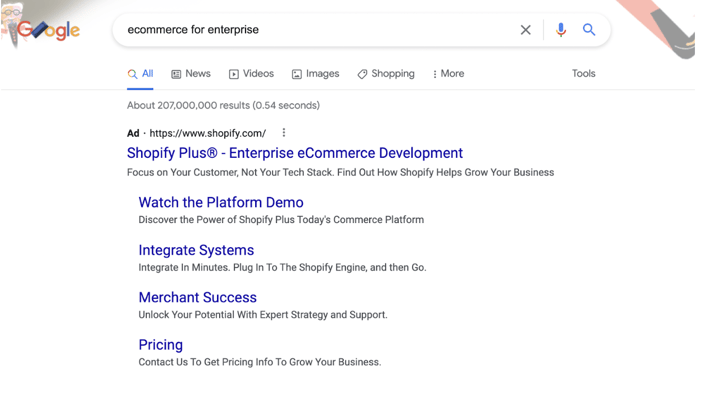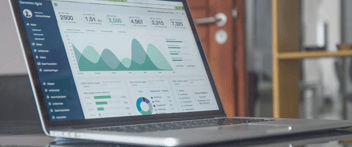3 Examples of a Google Ads Campaign Done Right
With the Google advertising network reaching 90% of internet users, a killer Google Ads campaign is clearly one of the best ways for digital marketers to extend their reach and generate best-fit leads. To create a digital ad campaign that captures audiences’ attention, digital marketers must shift their focus to the user experience. Today’s buyers expect an engaging user experience wherever they go, and digital ads and their associated landing pages are no exception. With a compelling ad and a top-notch user experience, lead generation with Google Ads has never been more lucrative.
In fact, consumers are four times more likely to click ads on Google than any other advertisement network. And with users who visit a website through Google Ads being 50% more likely to make a purchase, Google Ads campaigns can even boost your business’s revenue. Let’s dive into three examples of companies that have mastered the pay-per-click (PPC) ad and see how your marketing team can apply these tips to your organization’s Google Ads campaigns.
1. Canva’s “No Alternative” Google Ads Campaign Overpowers the Competition
Our first example is from Canva, a design platform that came up with a clever way to thwart searches for competitors. When users search for the phrase “Canva alternatives,” the first ad they see is for… you guessed it, Canva! The ad copy reads “Canva - There’s No Alternative,” immediately redirecting straying users back to their platform and telling new customers that they’re the best option right off the bat.

When potential buyers click on the ad, they’re taken to a landing page. The first thing that catches the eye is simple, black text that reads “Canva—Design for Everyone.” Below that, Canva’s platform is explained, and a button beckons users to start a free Pro trial. Images dance below the text, showing users everything that Canva’s platform will enable them to create, including marketing reports, proposals, logos, graphics, and more. The landing page goes on to present the differences between their free and Pro platforms in more detail, along with pricing information.
Canva’s ad is a great example of how to expertly leverage the right keywords to ensure their organization stays at the top of search results. By using the specific keywords “Canva alternatives,” Canva’s Google Ads campaign narrowed its focus to people who specifically want to use their competitors’ platforms. However, when searching for those platforms, the first result on the page will be directing them to Canva—reminding them that there’s no alternative. 😉
2. Automox’s Free Trial Google Ad Campaign Entices Audiences
Our second example is a Google Ads campaign by Automox, a cloud-native IT automation tool. Their ad is the first thing users see when they search for IT automation tools and prominently showcases an offer for a 15-day free trial.

The landing page welcomes users with large text reading “Start now, and have all of your endpoints safe and secure in 15 minutes.” Below, benefits of the platform are listed. To the right, there is a form to fill out to start a 15-day free trial. 🆓When users scroll down, they will see screenshots of Automox’s platform, along with customer testimonials and a graphic displaying the awards they have won.
The promise of a free trial attracts leads instantly, since potential buyers have nothing to lose by trying out a product or service for free. Free trials can also build trust among potential customers by letting them try your service before they buy, and not so tech-savvy buyers can explore your software and get comfortable using it. Automox is providing users with an offer to try their platform, hoping they get hooked on it and convert to customers down the line.
3. Shopify’s “Enterprise” Google Ads Campaign Targets a Specific Niche
Our final example is courtesy of Shopify, an eCommerce platform. In their Google Ads campaign, they chose to focus on industry-specific keywords, in this case, “enterprise.” This ad pictured below directly targets enterprises looking to build or revamp their eCommerce store. Shopify’s goal is to direct users to their Shopify Plus platform, which aims to provide eCommerce enterprises with reliable and personalized eCommerce solutions. 🛍 Shopify’s landing page is immediately eye-catching, with text reading “customizable and crazy fast.” When users scroll down, they can see the different enterprises Shopify partners with, as well as animated infographics displaying benefits of the platform. Customer evidence, including statistics and testimonials, dynamically moves as the user scrolls further down the page.
Shopify’s landing page is immediately eye-catching, with text reading “customizable and crazy fast.” When users scroll down, they can see the different enterprises Shopify partners with, as well as animated infographics displaying benefits of the platform. Customer evidence, including statistics and testimonials, dynamically moves as the user scrolls further down the page.
With this particular Google Ads campaign, Shopify is targeting a specific buyer persona: enterprises. By including “eCommerce” and “enterprise” in their keywords, Shopify can push their ad to anyone searching for eCommerce solutions, ensuring the first thing their potential buyers see is their ad and brand. In fact, PPC ads can increase brand awareness by 80%! By tailoring their campaign to enterprise buyer personas, Shopify ensures their ad will reach their target audience to maximize conversions.
Final Thoughts
With more than 80% of global businesses trusting Google Ads for PPC campaigns, they must be doing something right. And since 65% of people click on these ads when they’re looking to make a purchase, it is a very effective way to generate new leads. Leveraging keywords, offering free trials, and targeting specific buyer personas are all great ways to optimize your Google Ads campaign.
Interested in learning how your organization can get the most out of your Google Ads campaigns? Let’s talk! 🗣




